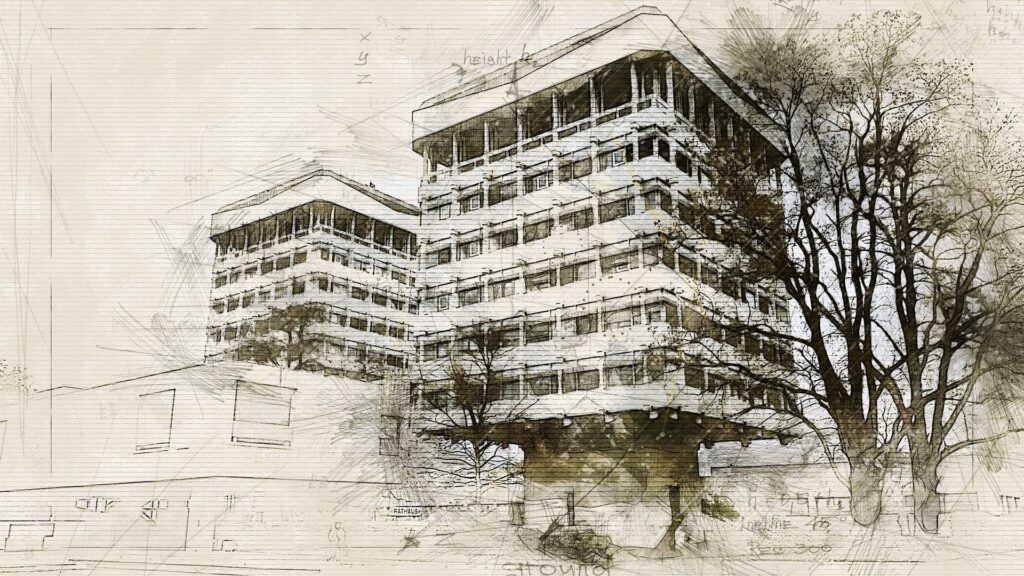The architect-client relationship is a cornerstone of successful projects. However, challenging client behavior can disrupt this delicate balance, leading to compromised design integrity, project delays, and financial loss. This post explores the more common examples of such behavior and offers practical contractual strategies to protect architects’ interests.
Conflict resolution can indeed be a crucial component of both exit strategy and risk mitigation planning within a business. By proactively addressing potential conflicts, businesses can minimize disruptions, protect their reputation, and facilitate a smoother exit process.
Common Forms of Client Abuse
- Scope-Creep: Excessive Scope Changes Without Compensation
Clients sometimes push for project modifications that go beyond the original agreement, expecting architects to adjust without additional fees. This scope creep strains resources, disrupts timelines, and adds uncompensated work. - Micromanagement and Undermining Expertise
A common misconception among some clients is that architects are simply technical executors of their vision. This narrow view disregards the architect’s role as a creative catalyst, a visionary who translates abstract ideas into tangible spaces. From the subtle curvature of a wall to the precise placement of a door architrave, the architect’s expertise is rooted in a deep understanding of form, function, and aesthetics. This nuanced knowledge is often invisible to the client, leading to misunderstandings and unnecessary interference. Such interruptions can stifle the creative process and ultimately compromise the quality of the final design. - Disrespectful Communication
Disrespectful communication can severely undermine the architect-client relationship. When clients employ abusive, dismissive or condescending language, it creates a stifling hostile work environment. Such behavior can erode trust, hinder collaboration, ultimately compromising the quality of the final design. Perhaps even leading to exiting the contract. - Financial Manipulation
Clients may attempt to cut costs by delaying payments or making late-stage budget reductions, putting undue financial pressure on architects. This practice not only creates cash flow issues but also impacts project morale. - Legal Threats
When disputes arise, clients may opt to resort to legal threats to force compliance or avoid additional costs. Such tactics can harm an architect’s reputation and lead to lengthy, costly conflicts.

Protective Contract Strategies
Architects should consider embedding protective clauses in contracts to mitigate these risks effectively:
- Detailed Scope and Change Protocols
Clearly outline the project scope, specifying that any extra work requires approval and compensation. It is important to define the time frame for each activity within the scope. This helps limit scope creep while setting clear client expectations. - Variation Control: (Variation Orders) Closely related to scope creep, variations must be meticulously controlled and constrained within clear contractual language. A seemingly simple change, such as replacing ceramic flooring with marble, can have significant implications for the project’s budget and timeline.
- Payment Linked to Milestones
Instituting a phased payment plan tied to project milestones helps ensure timely compensation, providing a buffer against budget cuts or delays. - Respect and Termination Clauses
Incorporate clauses that clearly outline acceptable standards of communication and behavior. This includes prohibiting personal attacks, threats, or any form of harassment. Additionally, including provisions for termination in cases of repeated or severe abusive behavior can provide a crucial safeguard for architects. For instance, if a client consistently fails to meet payment deadlines, engages in public defamation, or repeatedly undermines the architect’s professional judgment, these clauses can justify contract termination.

Legal Recourse
- When to Seek Legal Recourse; Dispute Resolution
Mediation or arbitration clauses can streamline conflict resolution, protecting architects from the reputational and financial costs associated with litigation. Consider legal action as a last resort, when negotiations and mediation fail. Situations warranting legal intervention include severe contract breaches, copyright infringement, defamation, physical threats, or persistent abusive behavior. Always consult with a legal professional to assess the specific circumstances of your case. - Have a Legal Advisor on Board
While having a dedicated legal advisor on retainer can be beneficial, it may not be feasible for all practices. A more practical approach is to establish a strong working relationship with a legal professional. This allows for ad-hoc consultations on specific issues, such as contract reviews, dispute resolution, or intellectual property matters. By building a trusted relationship, architects can access legal expertise when needed, without the significant cost of a full-time retainer.
Useful Links
5 Takeaways from the RIBA’s Report on Client-Architect Relationship
Client and Architect – Developing the Essential Relationship
